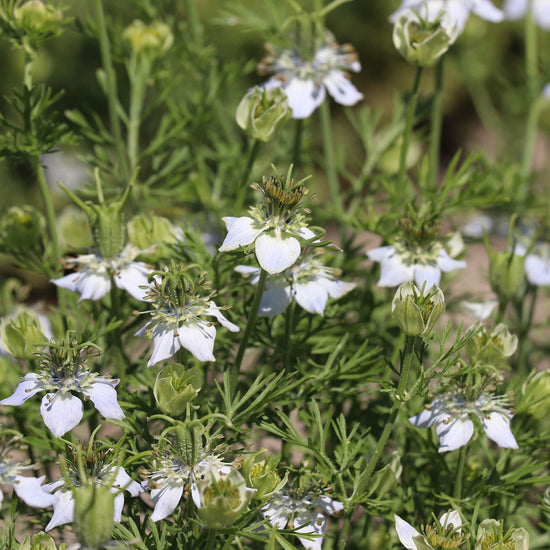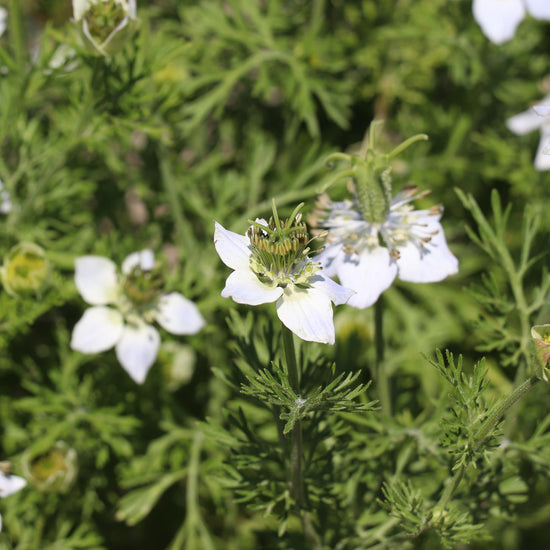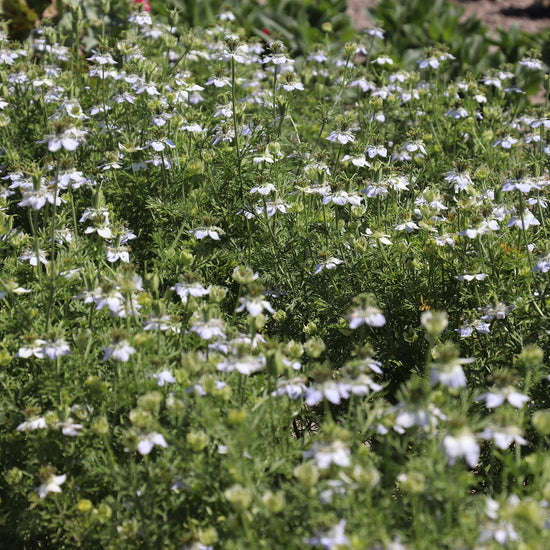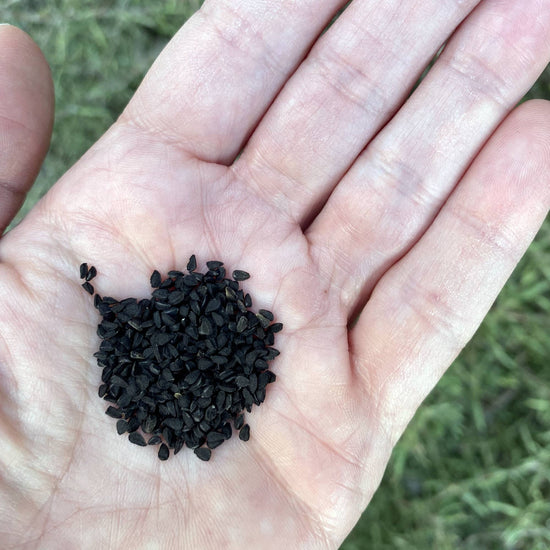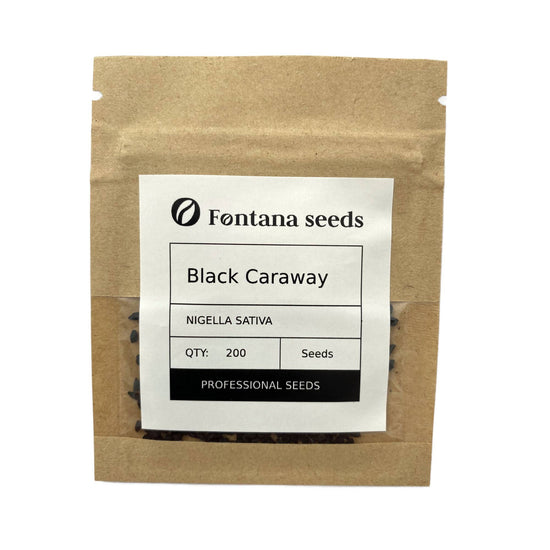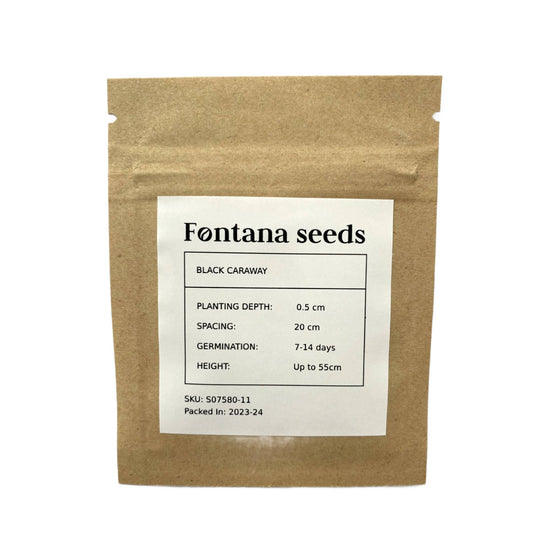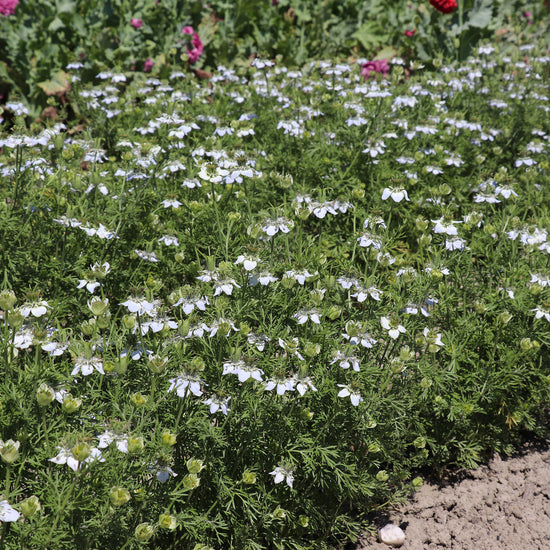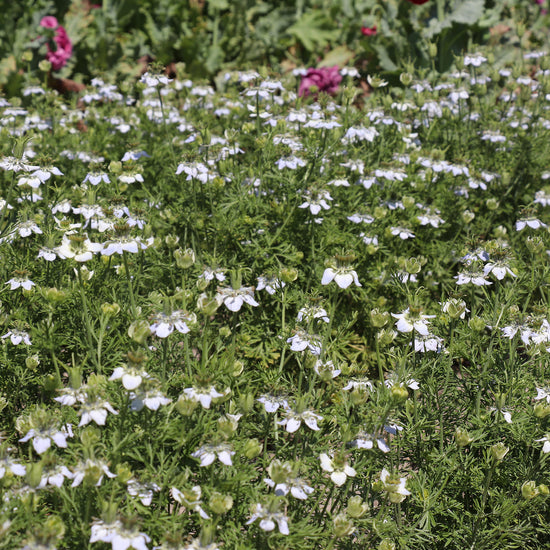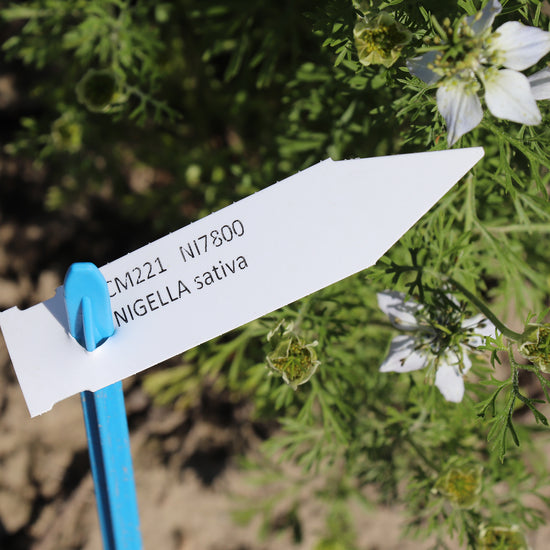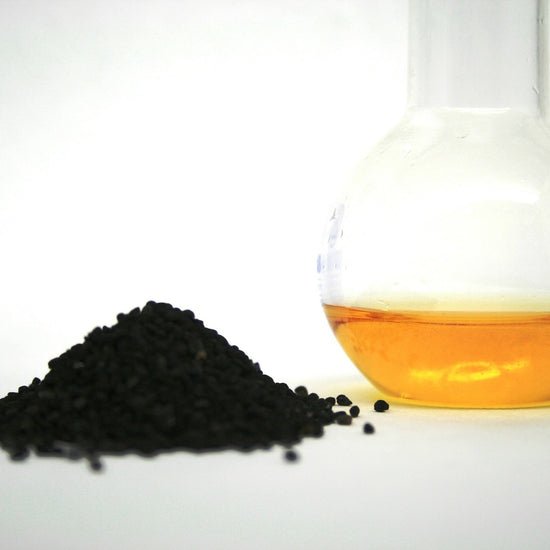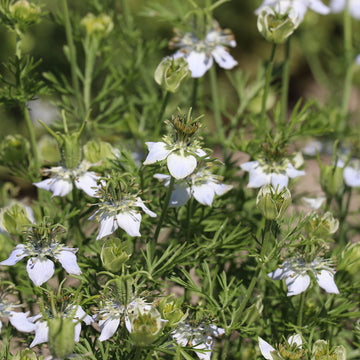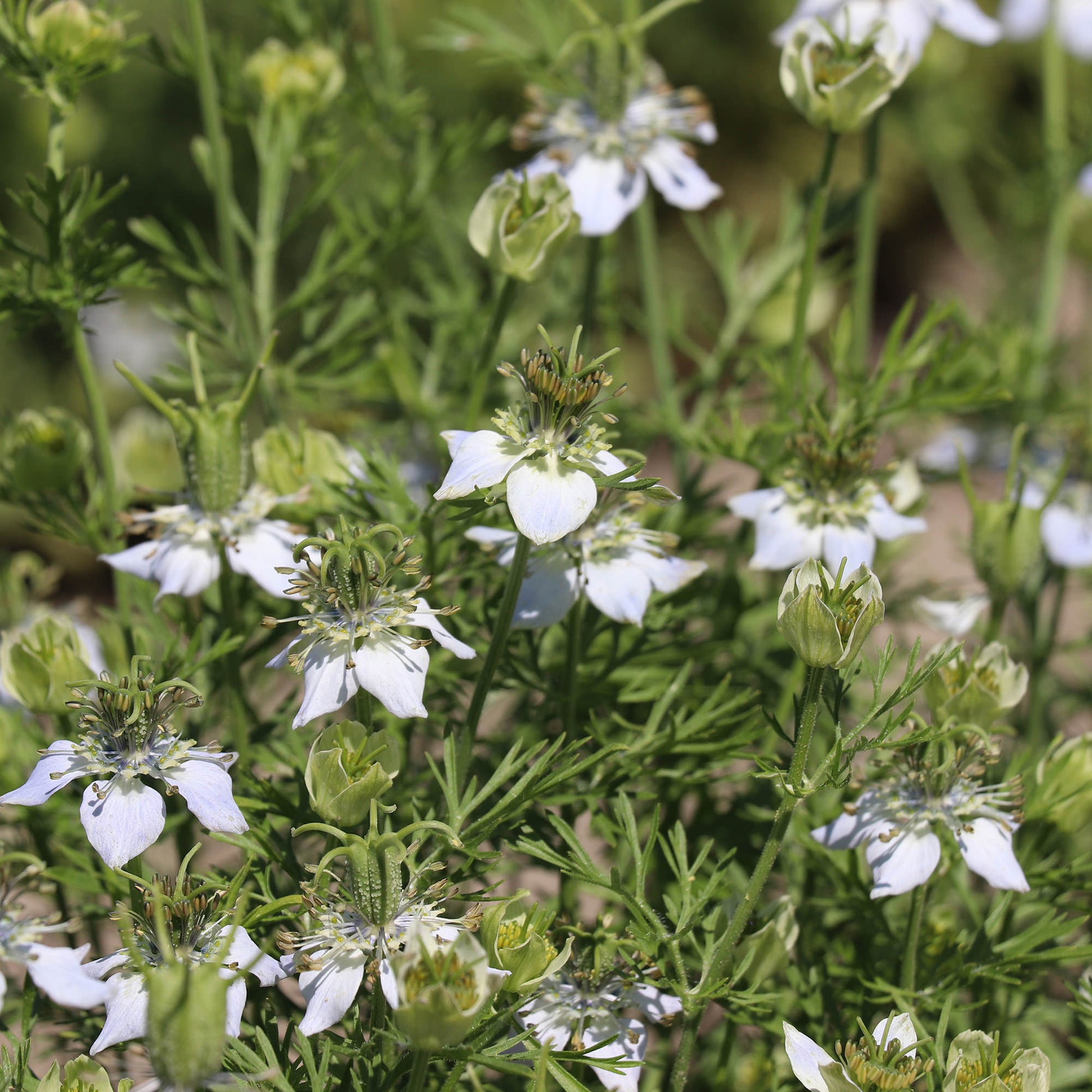
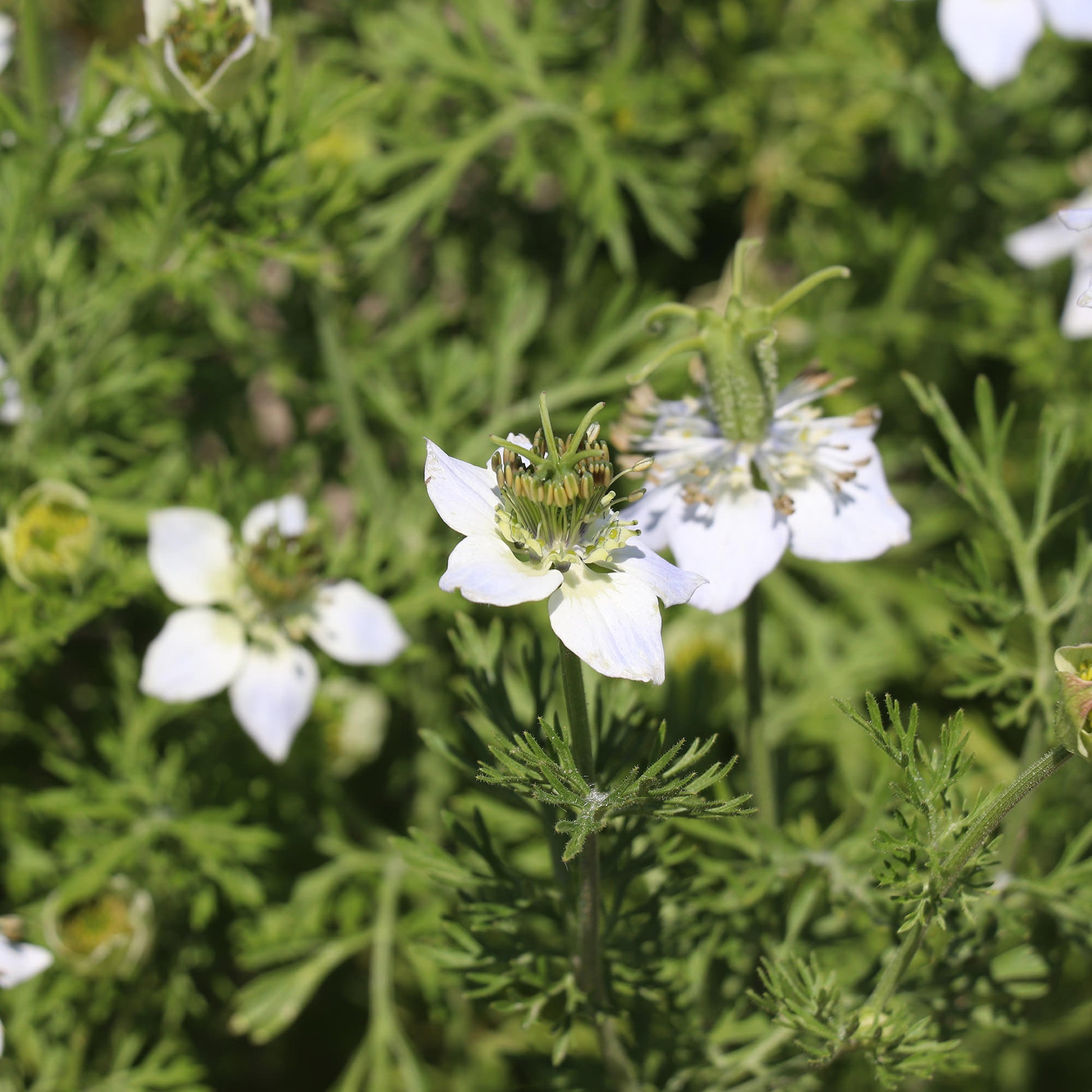
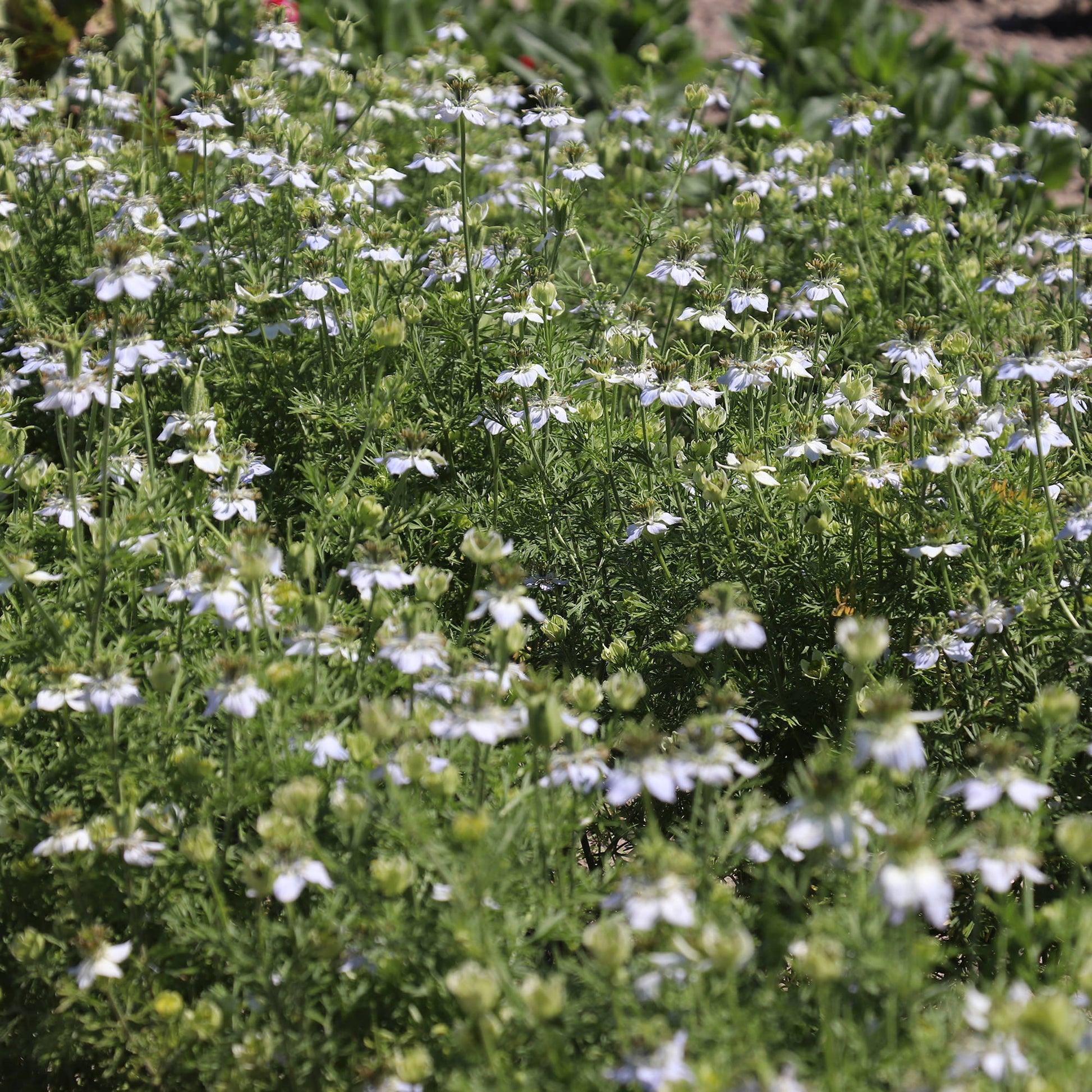
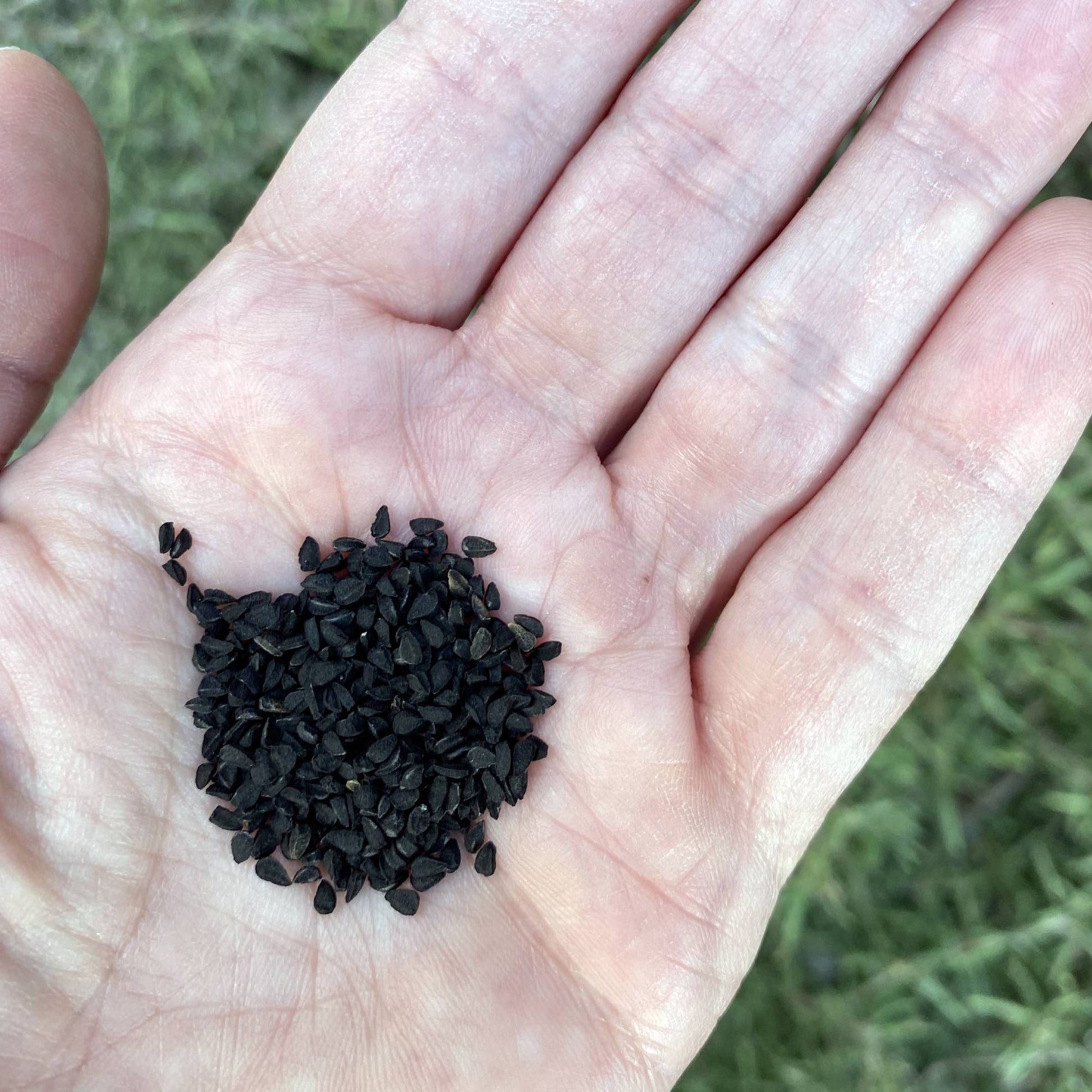
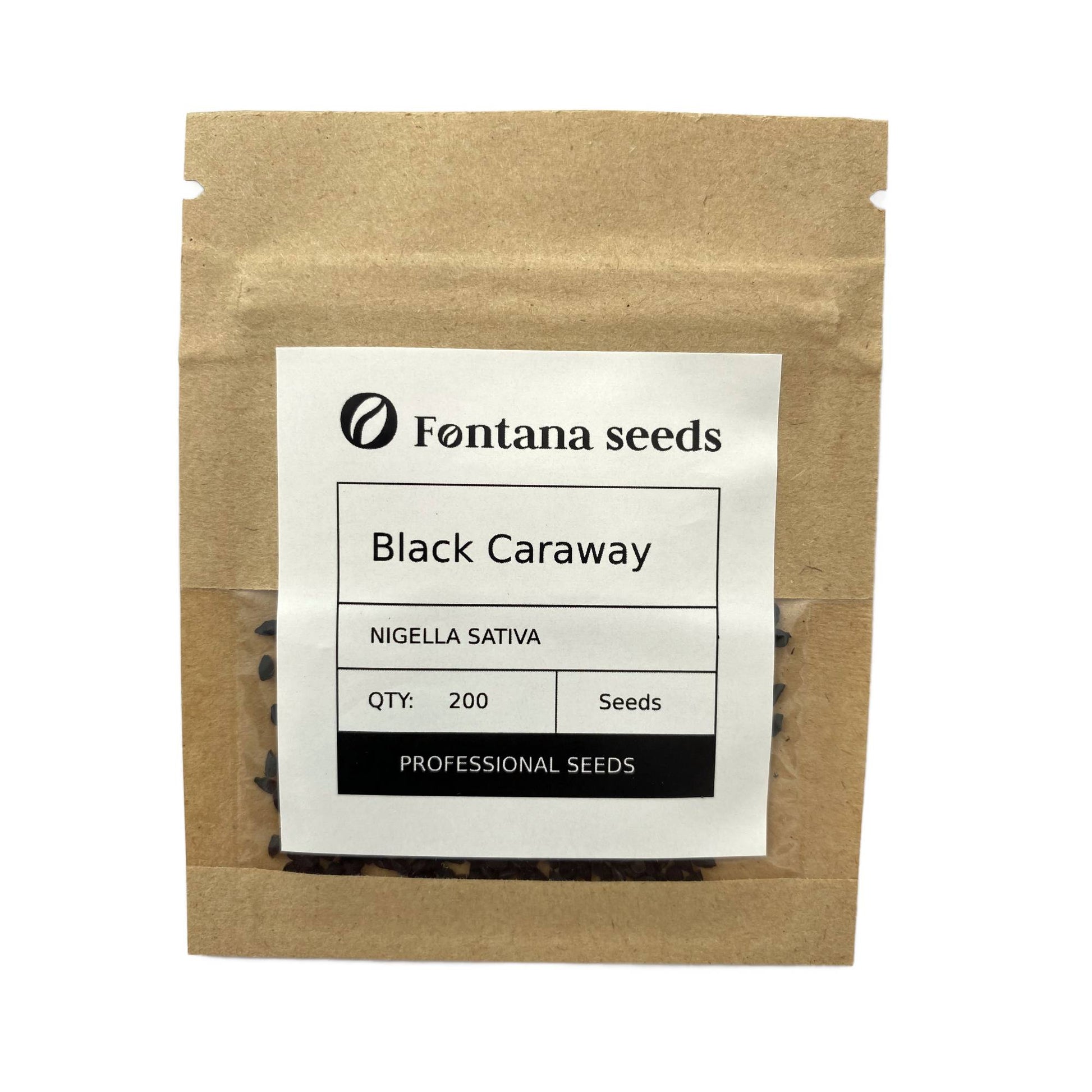
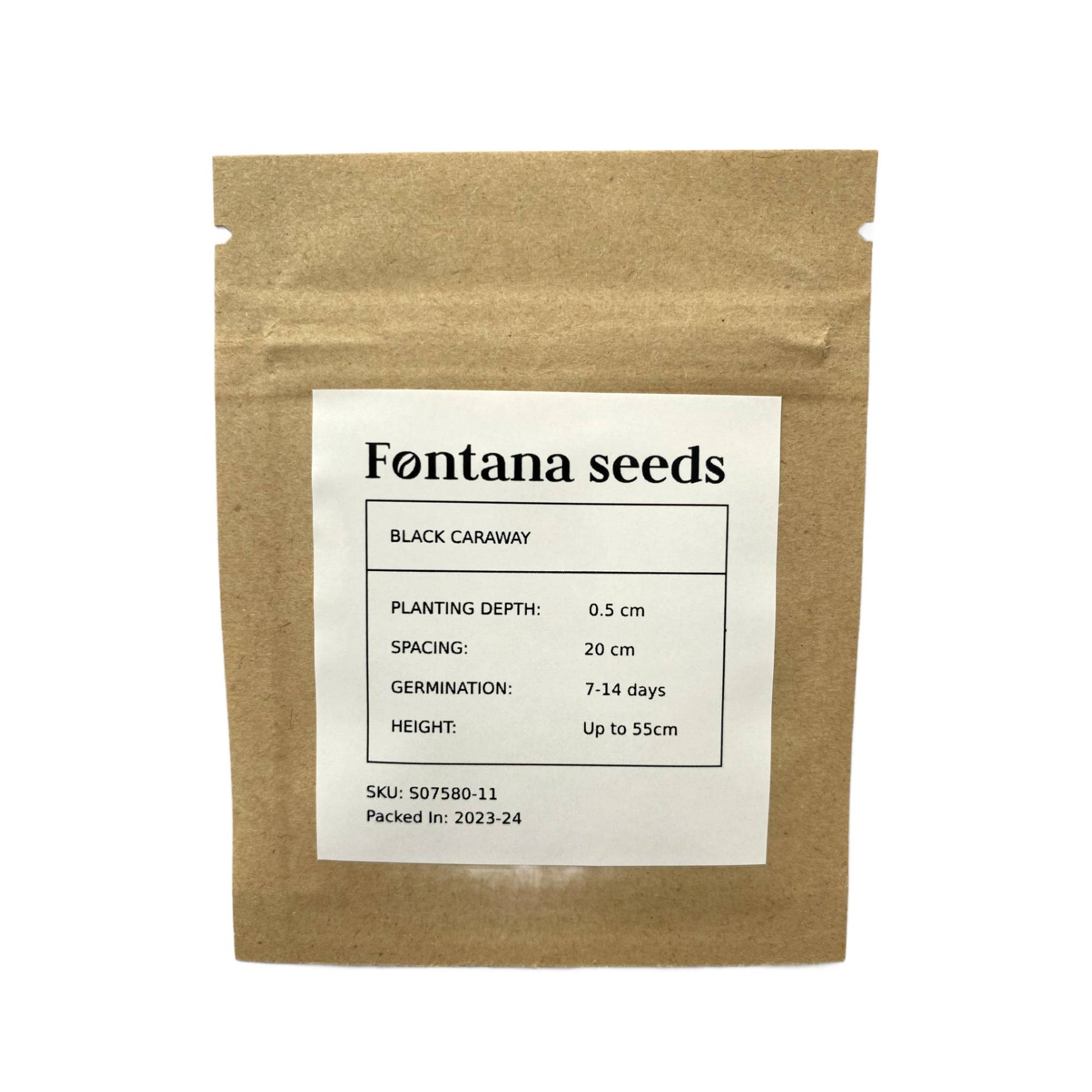
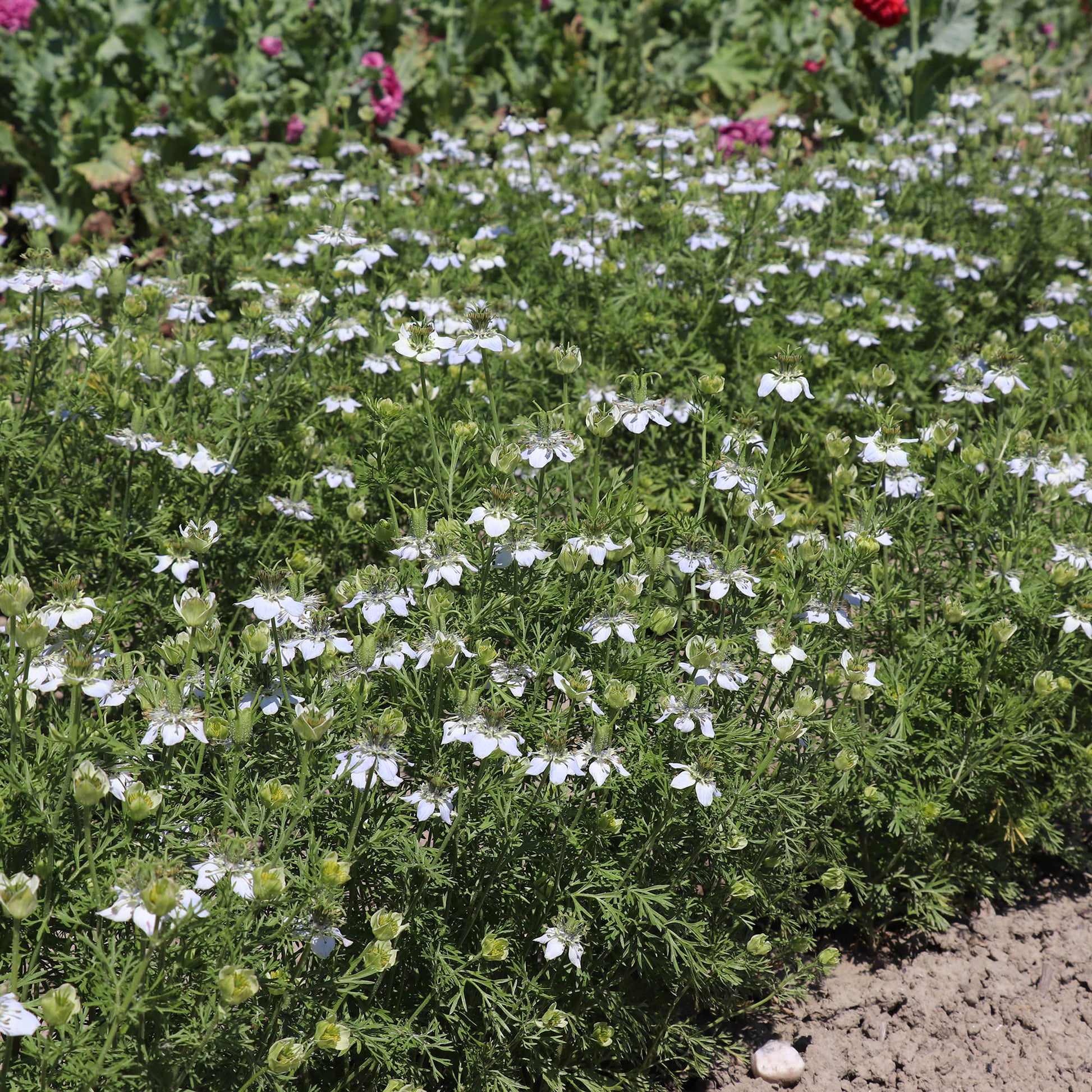
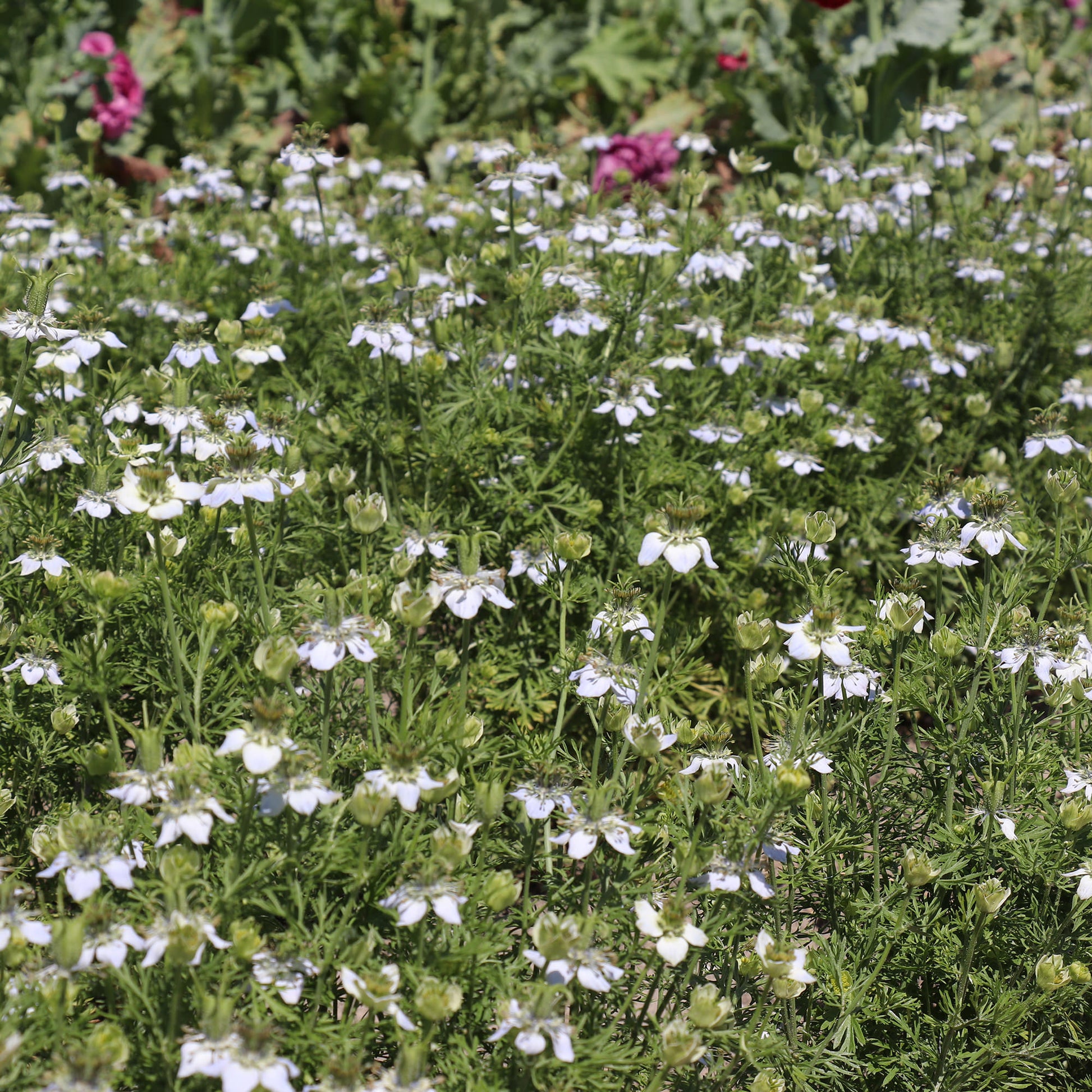
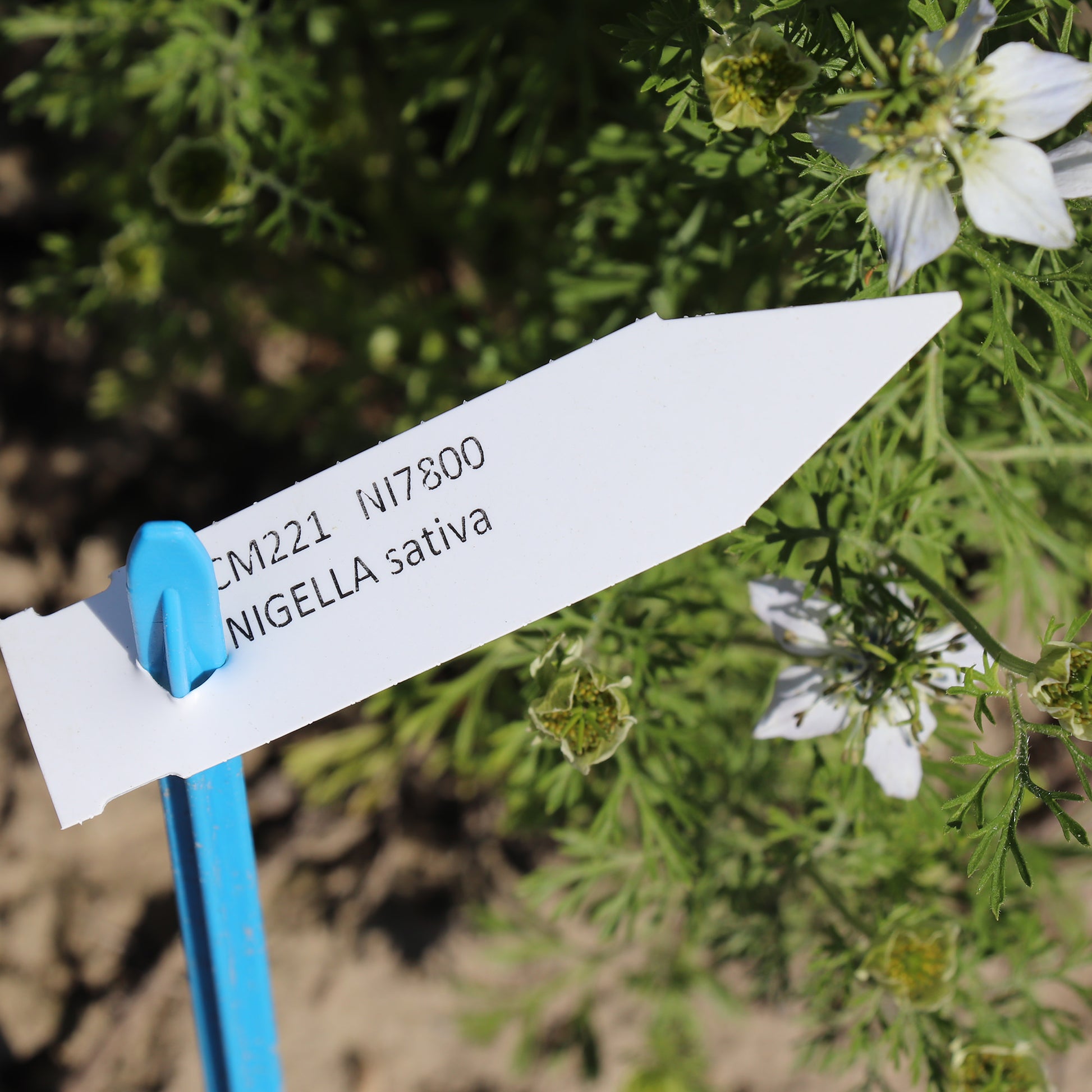
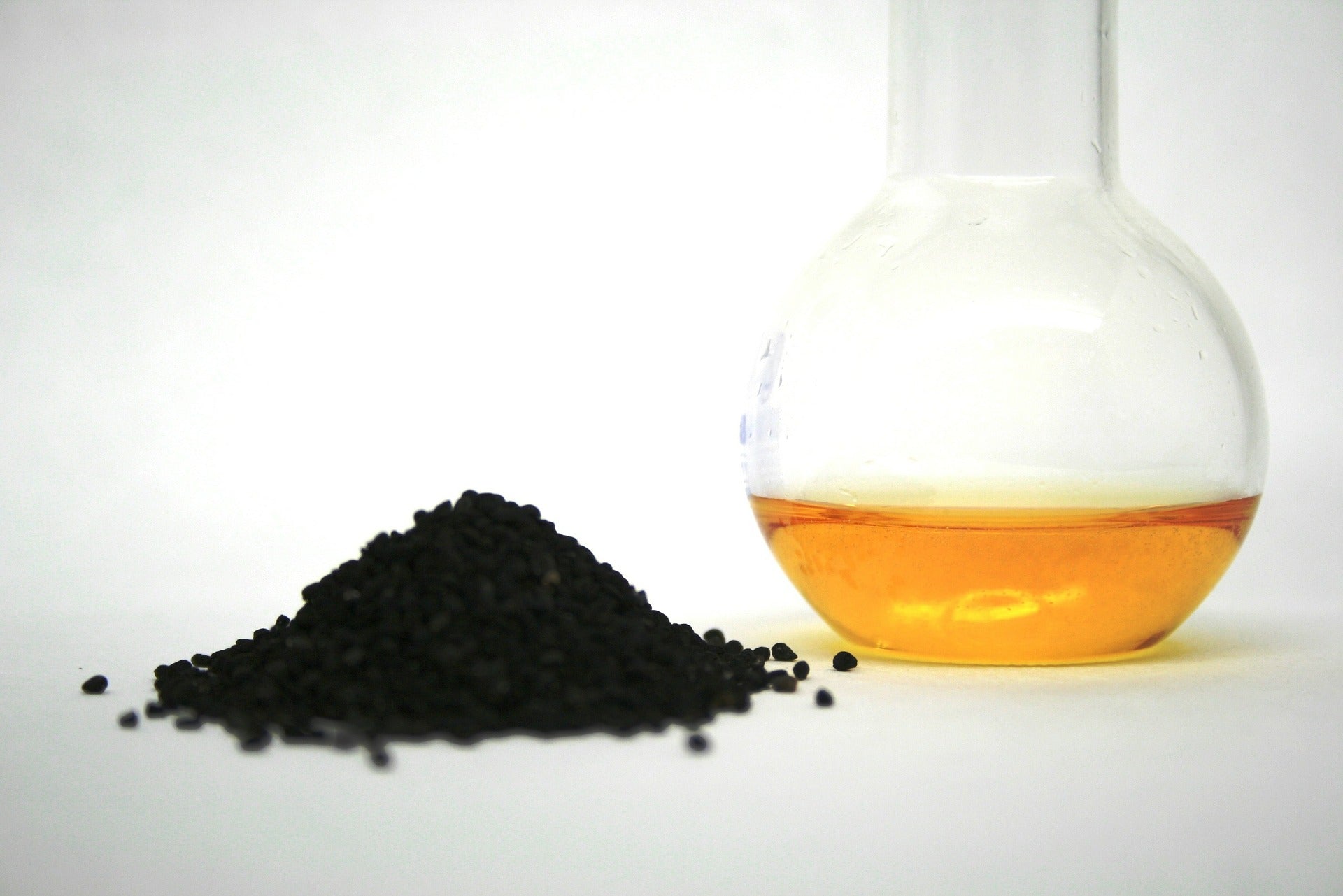
Nigella Sativa
- The seeds of N. sativa are used as a spice in many cuisines
- Black Caraway Seeds are usually fried or roasted before use
- The flowers are delicate, and usually colored pale blue and white
- 200 seeds per pack
-
Shipping Cost ONLY €3.75 for all EU Countries!
Nigella sativa (black caraway, also known as black cumin, nigella, kalojeera, kalonji or kalanji)
This pretty annual flowering plant is native to south and southwest Asia where it bears finely divided, linear leaves with delicate, starry flowers which are usually coloured pale blue and white, with five to ten petals. The fruit is a large, inflated capsule each containing numerous seeds which is used as a spice throughout the world.|
The seeds have little bouquet, though when they are rubbed they give off an herbaceous aroma that is reminiscent of oregano. The black seeds are used as a spice, slightly bitter and peppery with a crunchy texture, the seeds may be used whole or ground, they are easily crushed in a mortar and pestle.
The seeds are usually fried or roasted before use and like many other spices, nigella develops its flavour best after short toasting in a hot dry pan, or short frying in a little oil. They have a spicy, nutty flavour and can be sprinkled whole or ground up on food, and the oil can also be used on salads and other dishes.
Buy your Black Caraway Seeds with Fontana Seeds for delivery anywhere in Europe.

We keep it simple: shipping is a flat-rate €3.75 to any address in the European Union. Orders are packed on the sunny island of Cyprus and handed to the carrier within 1–3 working days. We ship by regular mail with delivery confirmation. As soon as your parcel leaves us, you’ll receive an email with a tracking link so you can follow it in real time. Typical delivery time is 5–15 business days, depending on destination and your local mail service. We currently ship within the EU only.
What Our Gardeners Are Saying
Real reviews from people who planted, grew, and loved it.
"Delighted. Sowed 15 hollyhock seeds to stagger planting, got 15 plants, now to Keep alive over winter in small greenhouse. Did autumn sowing of wildflowers in pots, have 4 pots of seeds germinated."
“Excellent company, 1st class seeds and 100% germination. Fast delivery. Have ordered twice and will continue to use Fontana Seeds.”
“Super selection and quickly delivered to Malta with full instructions how to prepare and take care of each item. Highly recommend 🌹”
“Ordered some seeds which arrived promptly and beautifully packaged. Very pleased.”
“Quick service. Very good quality seeds with excellent results after planting!”
"THE PRODUCT WAS WELL PACKAGED, ARRIVED IN A TIMELY MANNER AND I WAS FULLY INFORMED OF THE PROGRESS OF THE ORDER AND IT`S DELIVERY PROCESS."
"We've had some lovely flowers from the seeds. Great company."
"Seeds were delivered promptly & every one I used grew beautifully"
"Quick Delivery, good quality - that pretty much sums it up ;)"

